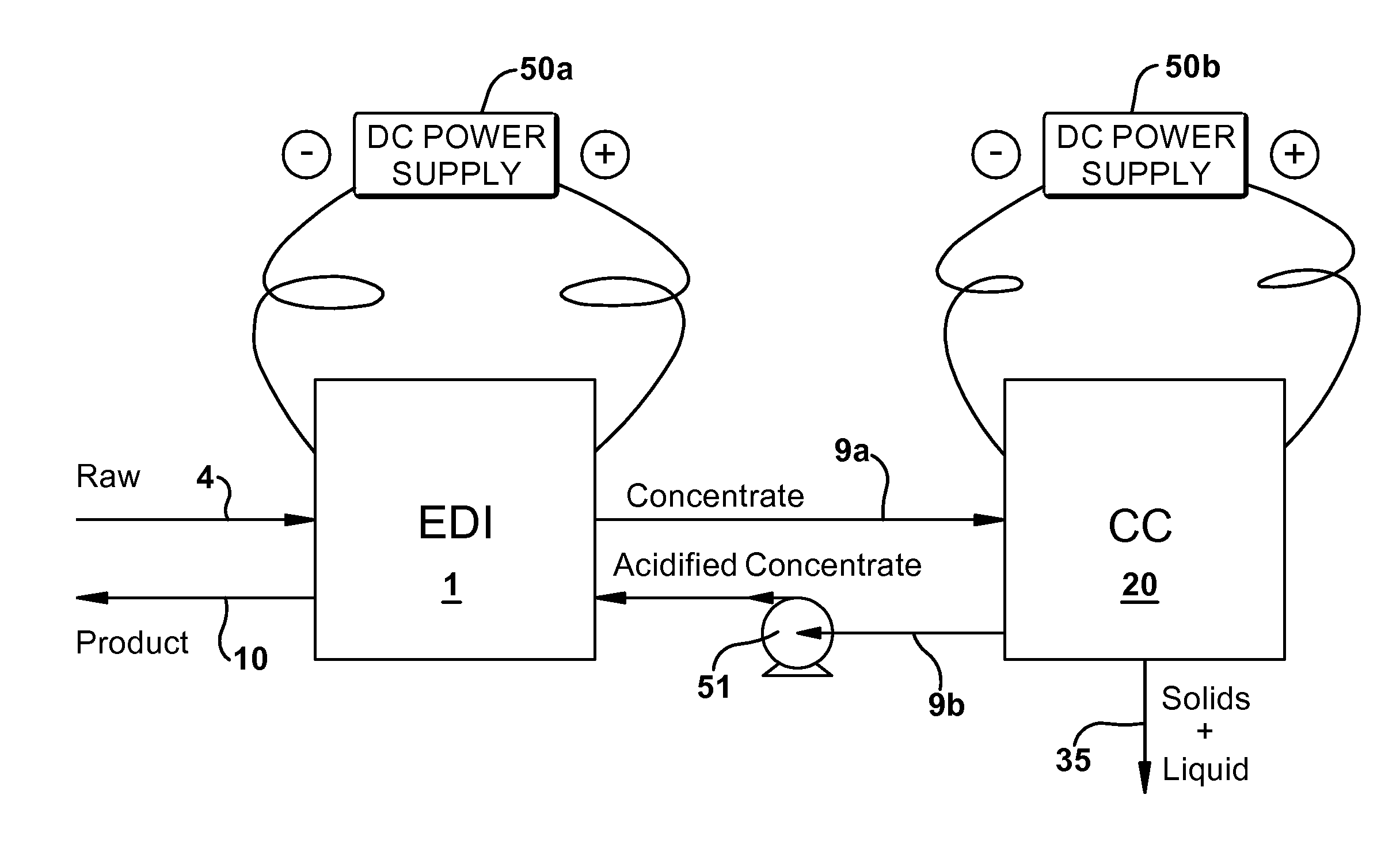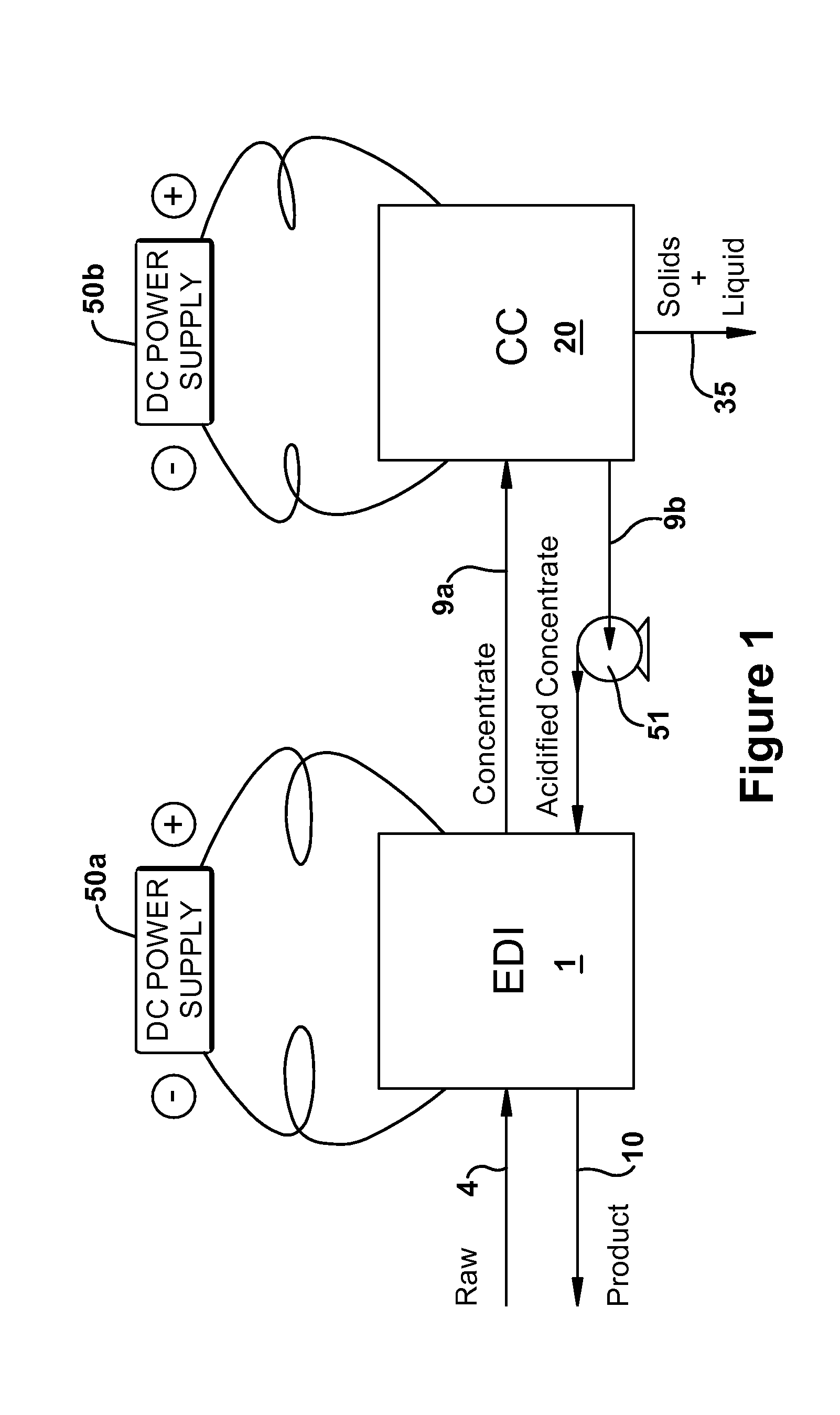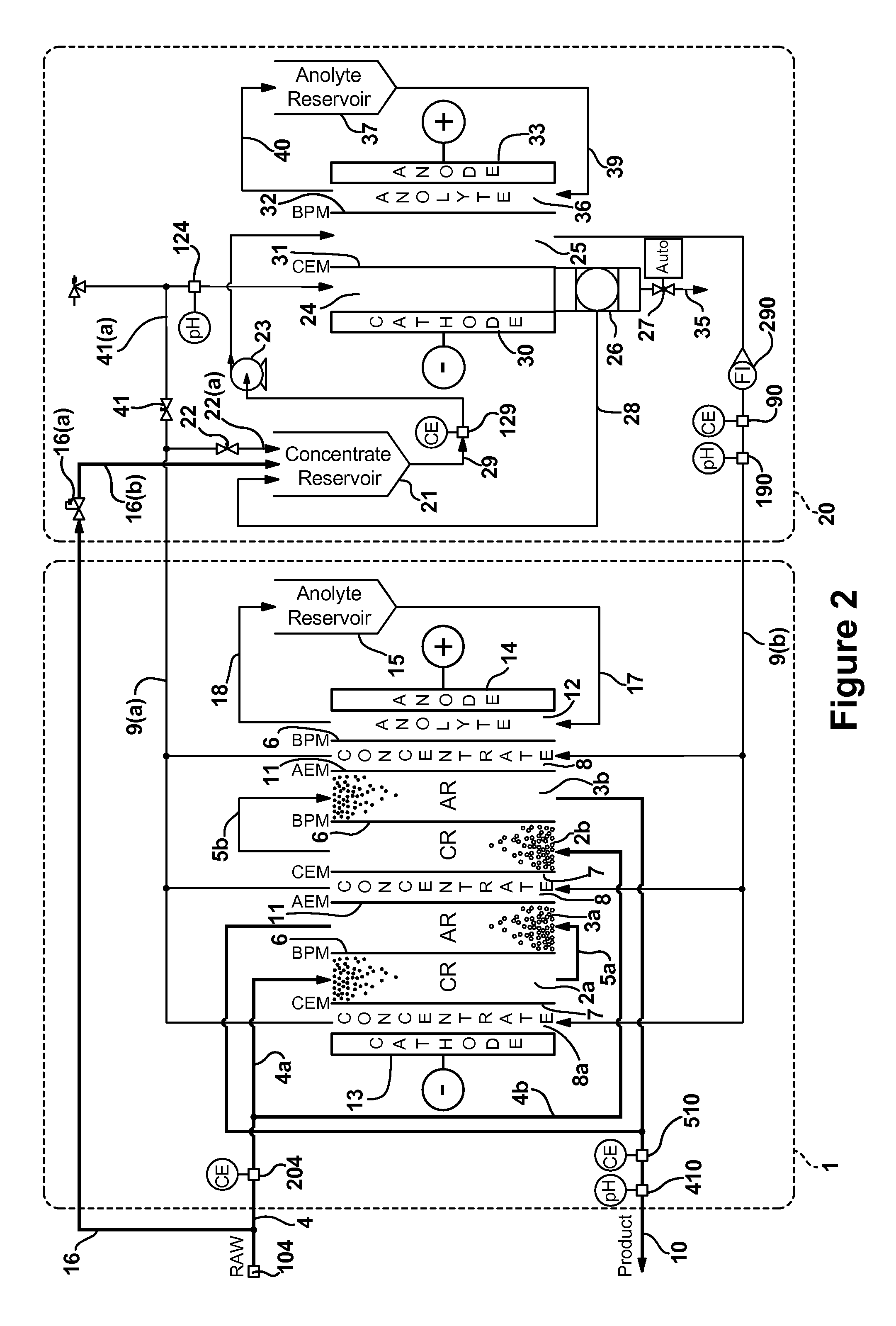Electrochemically regenerated water deionization
- Summary
- Abstract
- Description
- Claims
- Application Information
AI Technical Summary
Benefits of technology
Problems solved by technology
Method used
Image
Examples
example 1
[0097]An experimental system was built and configured according to FIG. 2. The effective area of the EDI electrodes and membranes was 24 sq. in. with 1.5 in. thick resin chambers. The concentrate and electrode chambers were supported with approximately 0.060 in. thick plastic mesh. The effective area of the CC Membranes was 26.7 sq. in. with a 1.5 in. deep cathode chamber and a 0.134 in. deep acidification chamber. The anode chamber was supported with approximately 0.045 in. thick plastic mesh. The system was operated as described in the preferred embodiment with a supplied voltage to the electrodes that resulted in 1.85 amps of current through the EDI cell and 5 amps of current through the CC unit. The feed water is Hamilton, Ontario municipal water, which comes from Lake Ontario. The water was analyzed to have the following:
Total dissolved solids (TDS)—177 mg / L
Hardness level—140 mg / L as CaCO3
Average conductivity—320 microsiemens / cm
Total Ammonia—0.35 mg / L
Total Kjeldahl Nitrogen (T...
example 2
[0099]Example 2 is a prophetic example using calculated results to construct a mathematical model of how a system would respond to a set of specific design criteria. This example will also illustrate the steps needed to design a system for other flow and loading rates. In this example, the total capacity of the anion exchange resin stated by the manufacturer is used to calculate remaining resin capacity. The total capacity of cation exchange resin is typically much higher than anion exchange resin, in this case 44% higher. Actual resin operating capacities are significantly lower than the manufacter's stated total capacity, typically approximately 70% of total capacity.
[0100]In this example, 100% capacity of the resin is defined as the amount of resin volume in service required to treat the design flow and loading over 24 hours, also assuming that the resin is 100% regenerated at the beginning of the simulation.
[0101]Design Criteria
Daily usage 1,416 litres / day
Peak Flow 23 litres / min...
PUM
| Property | Measurement | Unit |
|---|---|---|
| Current density | aaaaa | aaaaa |
| Current density | aaaaa | aaaaa |
| Current density | aaaaa | aaaaa |
Abstract
Description
Claims
Application Information
 Login to View More
Login to View More - R&D
- Intellectual Property
- Life Sciences
- Materials
- Tech Scout
- Unparalleled Data Quality
- Higher Quality Content
- 60% Fewer Hallucinations
Browse by: Latest US Patents, China's latest patents, Technical Efficacy Thesaurus, Application Domain, Technology Topic, Popular Technical Reports.
© 2025 PatSnap. All rights reserved.Legal|Privacy policy|Modern Slavery Act Transparency Statement|Sitemap|About US| Contact US: help@patsnap.com



